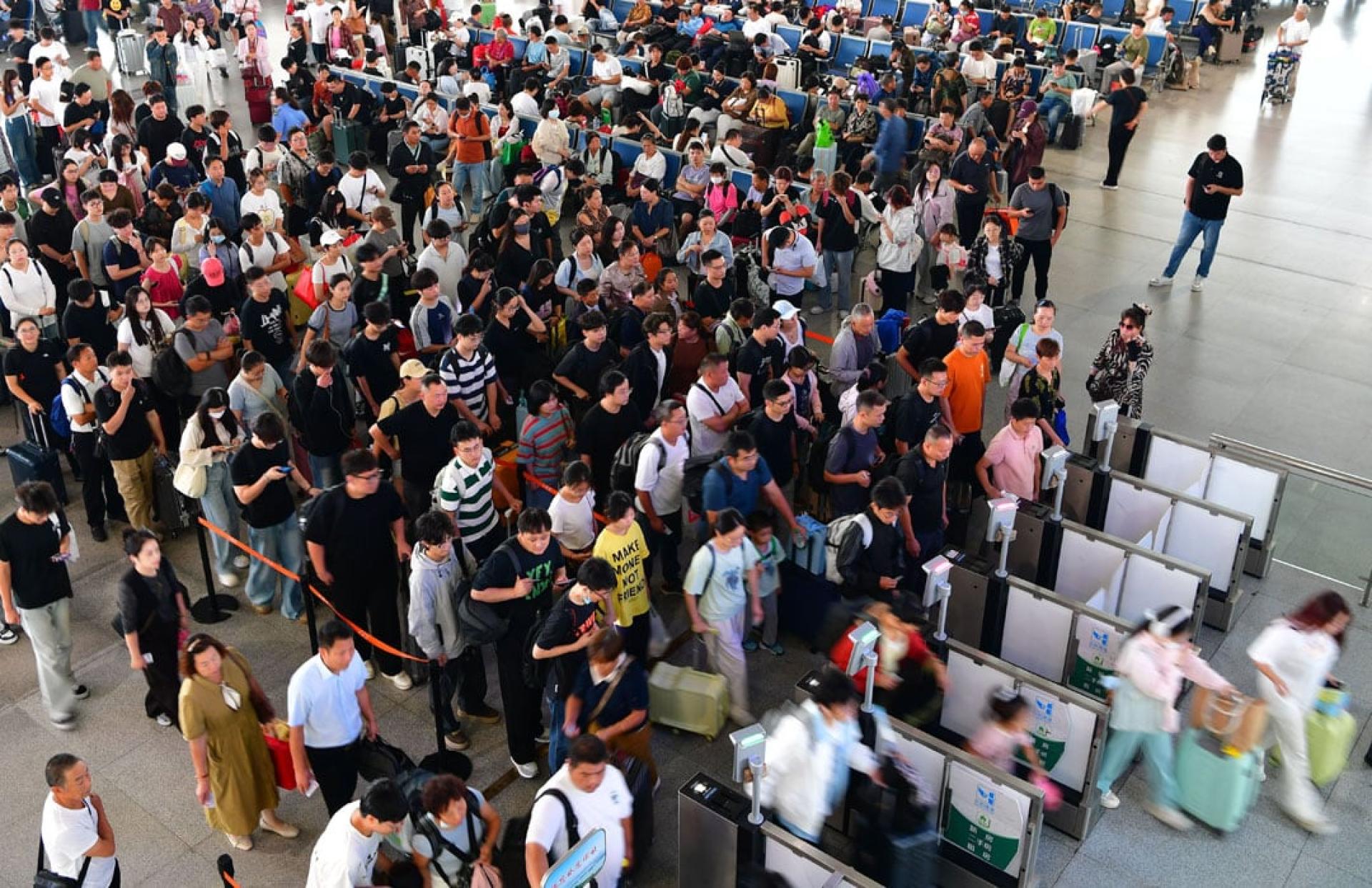This year, China's National Day and Mid-Autumn Festival holidays are combined for a total of 8 days. The estimated volume of cross-regional travel will reach 2.36 billion trips, averaging about 295 million trips per day. This reflects a 3.2% increase compared to the daily average (286 million trips) of the same period last year. Air travel is projected to reach 19.2 million passenger trips, a historical high for this period.
On September 28, Xiong Jie, Chief Flight Inspector of the Civil Aviation Administration of China (CAAC), stated that this year's National Day holiday is longer, with heightened interest in cultural tourism and numerous sports events, resulting in overlapping travel flows from various sectors. It is expected that civil aviation will see another surge in passenger volume after the summer travel peak. Projections indicate that passenger traffic in the civil aviation sector during the Mid-Autumn Festival and National Day holiday will reach 19.2 million, up 3.6% year-on-year, setting a record for the period.
Xiong Jie predicts that the passenger volume at small and medium airports in certain tourist destinations will grow rapidly. The most popular flight routes will be among the four major city clusters: Beijing-Tianjin-Hebei, Yangtze River Delta, Guangdong-Hong Kong-Macao, and Chengdu-Chongqing. Passenger throughput at 10 major international aviation hub cities—Beijing, Shanghai, Guangzhou, Chengdu, Shenzhen, Chongqing, Kunming, Xi'an, Urumqi, and Harbin—is expected to exceed 17 million trips. The integration of air travel with cultural and tourism activities is attracting more tourists, with airports in popular travel destinations such as Wuyishan, Xiangxi, Turpan, Dali, and Jiayuguan likely to see year-on-year passenger growth exceeding 30%.
According to a relevant official from China's Ministry of Transport, travel demand during this year's National Day Golden Week presents the following characteristics: First, self-driving remains the main mode of travel for the public. It is estimated that self-driving trips will reach 1.87 billion, accounting for nearly 80% of the total travel volume during the Mid-Autumn Festival and National Day holiday. During peak periods, highway traffic is expected to reach 70 million vehicles per day, including 14 million new energy vehicles.
Second, passenger flows will be particularly concentrated at the beginning and end of the holiday. The day before the holiday is expected to see a clear spike, with the peak of outbound journeys appearing on October 1, possibly exceeding 340 million trips in a single day and breaking historical records. The return flow will be concentrated on the days following the Mid-Autumn Festival, especially October 7 and 8.
Third, medium- and long-distance travel will see a significant increase. The 'holiday effect' is quickly unleashing demand for medium- and long-range journeys, resulting in heavy highway traffic into and out of key urban clusters such as Beijing-Tianjin-Hebei, Yangtze River Delta, Greater Bay Area and Chengdu-Chongqing, as well as on national and provincial roads leading to popular scenic spots.
